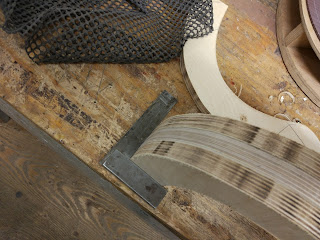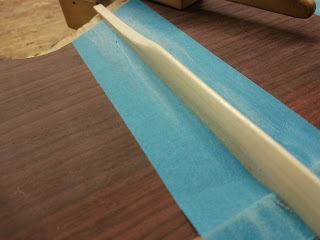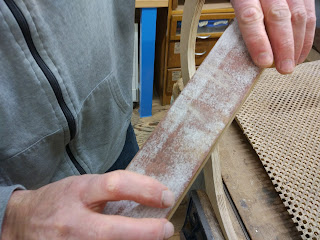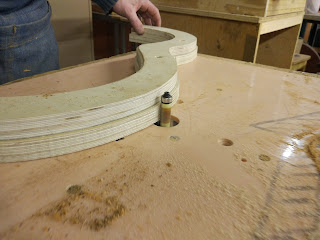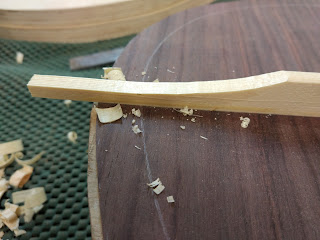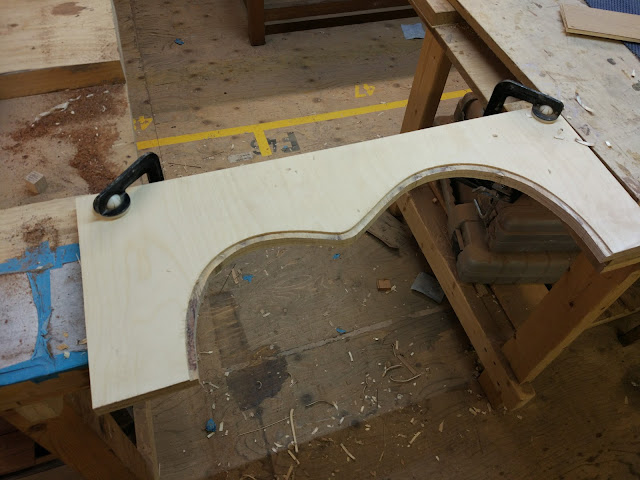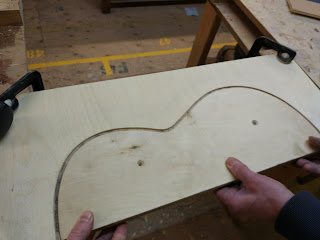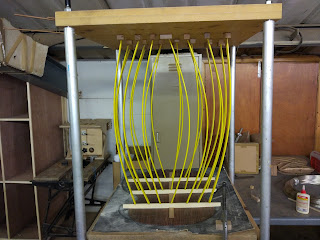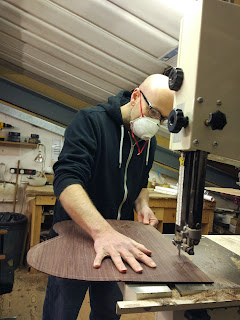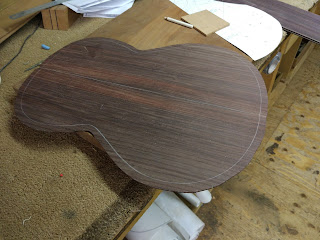I finished cutting the copies of the master mold template on the table router.
I lined up 3 pieces using a try square ruler.
I when I was sure that they were aligned correctly, I clamped them together.
I drilled pilot holes through the pieces and countersunk them and then screwed them together.
I sanded the joined pieces lightly to ensure that the joints were totally smooth on the inside.
I repeated this process to create the second half of the mold.
I finished shaping the back braces with a chisel.
I sanded the back braces to smoothen out the chisel marks.
I lined up 3 pieces using a try square ruler.
I when I was sure that they were aligned correctly, I clamped them together.
I drilled pilot holes through the pieces and countersunk them and then screwed them together.
I sanded the joined pieces lightly to ensure that the joints were totally smooth on the inside.
I repeated this process to create the second half of the mold.
I finished shaping the back braces with a chisel.
I sanded the back braces to smoothen out the chisel marks.
